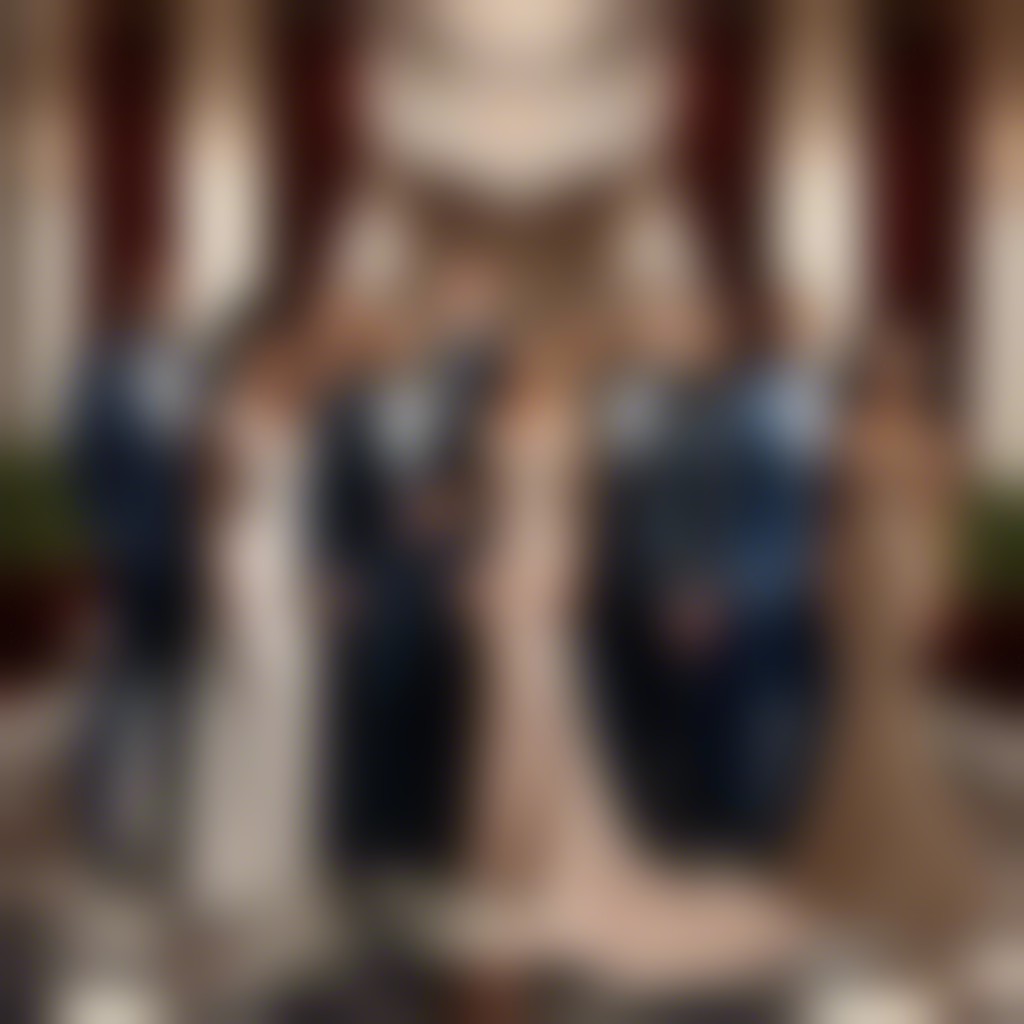Discover the essential qualities to look for in formal wedding guest dresses to ensure you select the perfect ensemble for an elegant affair.
Key takeaways:
- Color choice is crucial; avoid white or ivory.
- Decode the invitation to understand the dress code.
- Consider season for fabric, color, and style choice.
- Dress length should align with the dress code.
- Follow etiquette guidelines to respect the couple and the event.
Understanding Formal Wedding Guest Attire

Formal wedding attire is synonymous with elegance and sophistication. For women, this typically includes floor-length gowns or very elegant cocktail dresses. Men are expected to don a tuxedo or a dark suit and tie. If the invitation specifies “black tie,” men should wear a black bow tie and cummerbund, while women can opt for chic, full-length evening gowns.
Color choice is crucial; deep, rich tones are often preferred for evening events, whereas lighter shades may be suitable for daytime celebrations. It’s important to steer clear of white or ivory to avoid clashing with the bridal attire.
For accessories, aim for a polished finish. Women might select subtle jewelry and a clutch bag, and men should consider a pocket square or cufflinks to complement their ensemble. Shoes should be clean and dressy; women’s heels are standard, and men should wear leather dress shoes.
Remember that formal attire is not just about following rules; it’s about respecting the occasion and ensuring your presence contributes positively to the wedding’s ambiance.
Identifying the Dress Code
Before selecting a dress for a formal wedding, it’s important to decode the invitation. A ‘Black Tie’ event calls for floor-length gowns or very formal cocktail dresses. If you encounter ‘White Tie,’ that’s the pinnacle of formality—think full evening gowns, often with gloves.
For ‘Formal’ or ‘Black Tie Optional,’ the guidelines are slightly more flexible; a formal cocktail dress, a long dress, or dressy separates are appropriate. ‘Semi-formal’ or ‘Cocktail Attire’ typically means you can choose a shorter dress or a sophisticated evening ensemble.
Always consider the time of the event; evening weddings usually require more formal attire than daytime affairs. Lastly, never underestimate the power of accessories—a well-chosen clutch or piece of jewelry can elevate your entire look to align with the wedding’s dress code.
Seasonal Considerations for Formal Dresses
When dressing for a formal wedding, it’s essential to consider the season, as it affects fabric choice, color palette, and overall style.
For summer celebrations, light and airy fabrics like chiffon or silk keep you cool while still looking elegant. Opt for brighter hues or pastel shades that complement the warm weather.
In contrast, winter weddings call for heavier materials such as velvet or satin to keep you warm. Rich, deep colors pair perfectly with the season’s festivities.
Spring invites a mix of both worlds; you may lean towards lighter fabrics but with more coverage, like a long-sleeve chiffon dress in a soft floral print.
Autumn events often feature an earthy tone dress code. Fabrics with a slight heft like brocade or layered tulle in burgundy, navy, or emerald green reflect the season’s cozy vibe.
Always consider the venue’s climate control and bring an appropriate shawl or jacket if necessary, ensuring both comfort and style no matter the season.
Selecting the Perfect Length: Long, Midi, Short
When attending a formal wedding, the length of your dress plays a crucial role in adhering to the dress code. A long gown, reaching the floor, typically suits black-tie events and adds a touch of elegance and sophistication. They work well for evening receptions and are often expected attire for more traditional and opulent settings.
Midi dresses, which end between the knee and ankle, are a versatile option that suits semi-formal or cocktail dress codes while still maintaining a polished look. They are appropriate for both daytime and evening ceremonies and can be dressed up with statement jewelry and heels.
Short dresses, although less common for formal weddings, may be suitable for daytime or more casual events. If a short dress is your preference, aim for it to end no more than a couple of inches above the knee to keep it tasteful and in harmony with the formal nature of the occasion. Always consider the venue and time of day when deciding on dress length to ensure your outfit is perfectly poised for a wedding’s atmosphere and expectations.
Etiquette for Formal Wedding Attire
When attending a wedding with a formal dress code, etiquette is paramount to respect the event’s solemnity and the couple’s preferences. Here are some key points to remember:
– Check the invitation for specificity; “Black Tie” and “White Tie” have different expectations, the former allowing for dark suits or tuxedos for men and evening gowns for women, while the latter dictates full evening dress, including tailcoats for men and more elaborate gowns for women.
– Stay clear of white or ivory dresses to avoid overshadowing the couple, especially the bride. Similarly, overly flashy or revealing attire can be deemed disrespectful; you’re there to complement the occasion, not dominate it.
– Consider the venue’s formality. A church wedding might call for more conservative choices, whereas a formal beach wedding might allow for lighter fabrics and slightly less traditional formal wear.
– Accessories should align with the formality of your outfit. For men, this may mean cufflinks and a pocket square, while women might choose elegant jewelry and evening clutches.
– Lastly, out of respect for the event, avoid overly casual elements, such as sunglasses indoors or digital watches with formalwear, which can detract from the overall elegant atmosphere.



